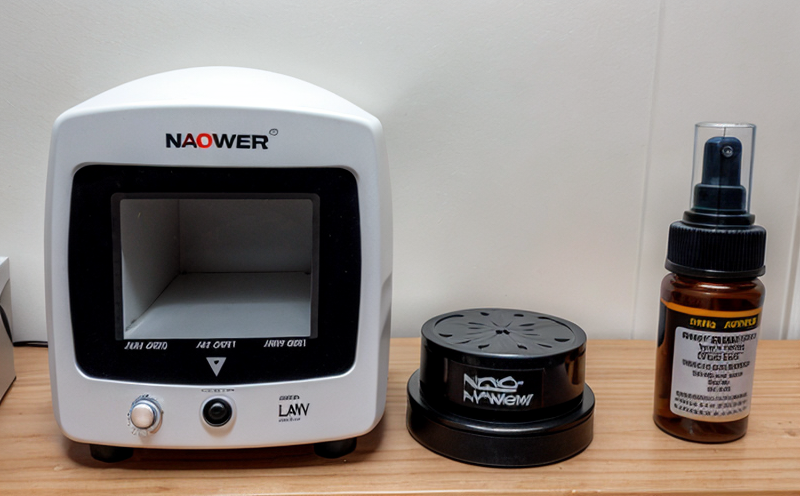ISO 14644 Airborne Particle Concentration Measurement in Cleanrooms
The ISO 14644 series of standards provides a comprehensive framework to ensure that cleanroom environments meet the specified air quality requirements. The focus on airborne particle concentration measurement is crucial for maintaining the integrity and functionality of critical processes within these controlled environments.
Particles in cleanrooms can originate from various sources, including personnel, equipment, and materials used during manufacturing or research activities. These particles may range from dust to biological aerosols, depending on the application. Accurate measurement of airborne particle concentration is essential for ensuring that the cleanliness class requirements are met and maintained over time.
The process involves several key steps, starting with the selection of appropriate sampling methods based on the size of the particles being measured. For ISO 14644-3, which specifically addresses airborne particulate matter in cleanrooms, a laser diffraction particle sizer is often used for measuring the concentration and size distribution of particles.
The testing protocol typically begins with preparing the sampling site according to the specified cleanliness class. This involves ensuring that all personnel are properly dressed in appropriate protective clothing and that there are no sources of contamination nearby. The sample is then collected using a suitable particle collector, which should be positioned at a specific location within the cleanroom as defined by the standard.
The collected sample is subsequently analyzed to determine its particle concentration and size distribution. This analysis can reveal whether the air quality meets the required specifications for that particular cleanliness class. If discrepancies are found, corrective actions may need to be taken to address any sources of contamination or other issues affecting the cleanroom environment.
Understanding the parameters involved in this testing is vital for maintaining compliance with industry standards and ensuring product quality. This service plays a critical role in safeguarding sensitive processes and products from potential contamination risks.
| Applied Standards |
|---|
| - ISO 14644-3:2019 - Cleanrooms and associated clean environments — Part 3: Test methods for airborne particulate matter |
The use of advanced instrumentation such as laser diffraction particle size analyzers ensures precise measurement, providing reliable data that is essential for making informed decisions regarding the cleanliness class of a given area.
Applied Standards
The application of ISO 14644-3 in cleanroom environments involves adhering to several key standards:
| Standard | Description |
|---|---|
| ISO 14644-3:2019 | - Cleanrooms and associated clean environments — Part 3: Test methods for airborne particulate matter |
This standard outlines the procedures for sampling, analysis, and evaluation of airborne particles in order to determine compliance with specified cleanliness classes. It specifies various parameters including particle size ranges and concentration limits that must be met.
Additionally, ISO 14644-5:2019 provides guidelines on the design, construction, operation, and maintenance of cleanrooms and associated clean environments. While not directly related to particle concentration measurement, it supports overall compliance by ensuring that all aspects necessary for maintaining a controlled environment are addressed.
Benefits
The implementation of ISO 14644-3 air quality testing in cleanrooms offers numerous benefits:
- Enhanced Product Quality: Ensures that products manufactured or researched within these controlled environments are free from contamination, leading to higher quality outputs.
- Increased Efficiency: By maintaining optimal conditions, processes can operate more efficiently without interruptions caused by contamination issues.
- Regulatory Compliance: Meeting the specified cleanliness classes helps organizations comply with regulatory requirements and maintain their certifications.
- Improved Safety: Reducing particle concentrations minimizes health risks for personnel working in these environments, especially when dealing with hazardous materials or biologically sensitive processes.
- Cost Savings: Early detection of contamination issues can prevent costly rework or product recalls down the line.
In summary, adhering to ISO 14644-3 through rigorous particle concentration measurement ensures that cleanrooms remain compliant and operate efficiently, thereby supporting overall business goals and objectives.
Why Choose This Test
Selecting the appropriate test for airborne particle concentration in cleanrooms is essential for ensuring reliable results. Here are some reasons why choosing this specific ISO standard could be beneficial:
- Precision and Accuracy: The laser diffraction method used in accordance with ISO 14644-3 provides highly accurate measurements, which are crucial for maintaining consistent product quality.
- Comprehensive Data: This test not only measures particle concentration but also determines the size distribution of particles, offering a more complete picture of air quality.
- Industry Recognition: Adherence to internationally recognized standards like ISO 14644-3 enhances credibility and trustworthiness among stakeholders.
- Frequent Monitoring: Regular testing according to this standard allows for continuous monitoring of the cleanroom environment, ensuring that any issues are addressed promptly.
By choosing this test, organizations demonstrate their commitment to maintaining high standards of cleanliness in critical environments, ultimately contributing to safer and more efficient operations.





